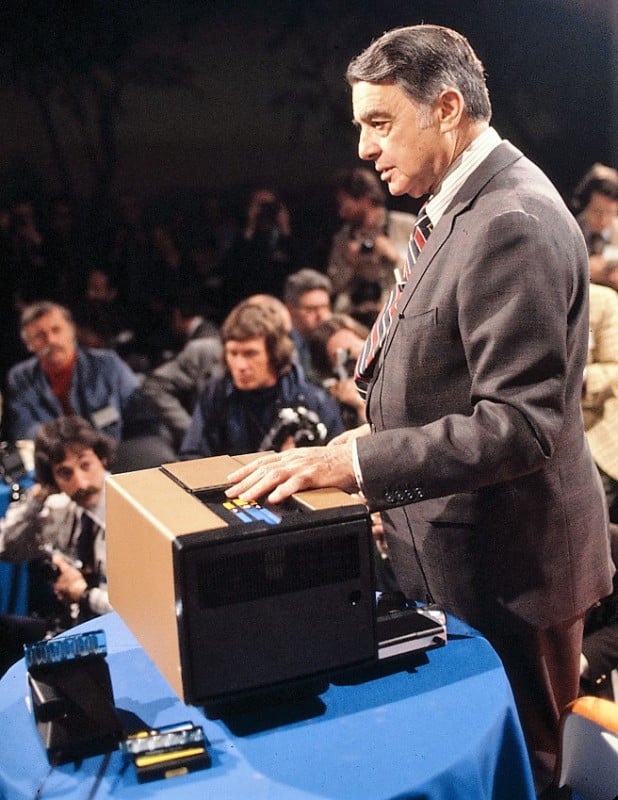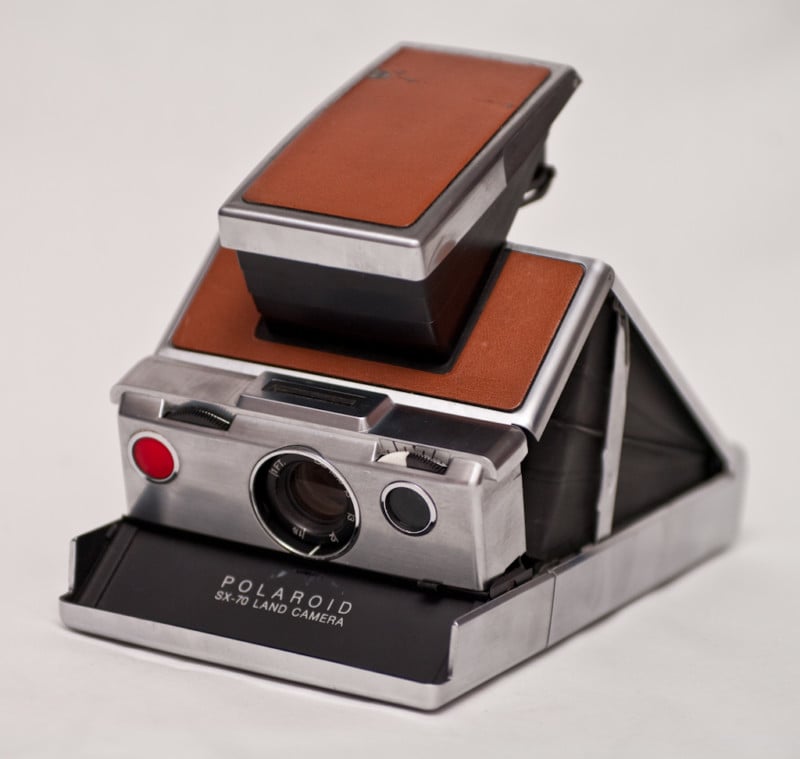How Did Polaroids Become Popular Again
Every bit the epitome of instant photography, Polaroid has experienced both massive popularity in its heydey through a dramatic fall after every bit information technology dealt with the realities of the digital photography boom. This video from Business organization Insider shares the history of the iconic brand and where it is today.
Polaroid as an American company started in 1937 when it was founded by Edwin H. State and George W. Wheelwright Iii and get-go entered the market selling polarized sunglasses. Dubbed as "the Apple tree of its time" by some, the company began to produce the at present well-known instant cameras — as well likened to having the latest iPhone at the fourth dimension — and reached its popularity summit in the 1970s when it controlled near ii-thirds of the instant camera market place in the U.s..
![]()
During the Second World War, Polaroid's main customer base was primarily the war machine, while the instant camera idea arose from Land'due south personal experience with his daughter during a day out when she asked why information technology is not possible to instantly see the photo taken on a Rolleiflex camera. This prompted Country to spend several years working on the idea to create a cocky-developing film that could exist contained inside the body of a camera. He revealed his instant motion picture invention to the world in 1947, using his own self-portrait.

This invention allowed Polaroid to launch its first instant camera, the Polaroid Model 95, a year later in 1948 which sold out nearly immediately. Instant cameras proved to be a success, although first popular mostly amidst the affluent who could pay the toll of entry. During the 1950s and 1960s, Polaroid cameras became smaller, amend, and more popular, especially afterwards the company introduced the offset colour film in the Colorpack camera in 1963 and a cheaper photographic camera model, the Swinger in 1965, which was aimed at teens.
Although Polaroid sales reached $400 million in the late 1960s, Land wanted to go a step further and discover a manner to create an even more compact camera that could be always carried effectually and could easily shoot in an automobile mode. That concept materialized into another pop model, the SX-70, which sported a collapsible blueprint and required an extensive amount of money to be spent on developing this more than circuitous camera organization and manufacturing ability to keep up with the demand.

As the revenue kept growing, the instant Polaroid cameras became a household proper noun and proved to be pop both among celebrities, such as Andy Warhol, and regular families who wanted to capture memories, holidays, and other personal moments. To innovate something new in the market place, Land wanted to employ his instant photography idea onto moving images through his initiative of Polavision — an 8mm film system that could produce instant moving pictures.
This initiative — which sold only 60,000 units and was before long discontinued in 1979 — was expensive and garnered skepticism, specially because users of Polavision would be required to accept a purpose-built box to see the moving-picture show. Soon later on this, Land stepped down and left the company entirely, just as the company faced competition from Kodak, which released a similar pattern and toll bespeak camera — Polaroid sued Kodak, and won, for this particular product.

Despite the victory, this didn't salve the gradual turn down of the company which primarily relied on pic sales. At the time, 35mm film cameras became pop and proved to be cheaper, easier to use, and delivered higher quality photos, as did the start Nikon and Catechism digital cameras. The growing popularity of the digital photography market place was an uphill battle that Polaroid eventually lost when it declared bankruptcy in 2001.
The company changed owners several times, announced the end of instant camera and film production in 2008, until the Impossible Projection started working with erstwhile Polaroid staff to industry films, such every bit for the SX-70 and 600 cameras, and work on improving their quality. Impossible Project somewhen bought what was left of Polaroid in 2017 and rebranded it as Polaroid Originals.
![]()
This alter of owners and direction helped revive the Polaroid brand in the mod world, bringing analog feel in a digital globe, while embracing modern engineering to produce products, such as iPhone scanners and 3D printers. In the past few years, Polaroid has created numerous collaborations and initiatives — such equally collaboration with Teva, Keith Haring Foundation and FENDI, the release of Lacoste and Mandalorian-themed camera and instant film, and the launch of the smallest analog camera in the world, the Polaroid Go, and the previously discontinued 600 Circular Frame instant picture, and many more.
The total story of Polaroid'south history is shown in the Business Insider video higher up, with more educational videos found on its YouTube aqueduct.
Source: https://petapixel.com/2021/08/25/the-rise-fall-and-revival-of-polaroid-the-instant-photography-icon/
0 Response to "How Did Polaroids Become Popular Again"
Post a Comment